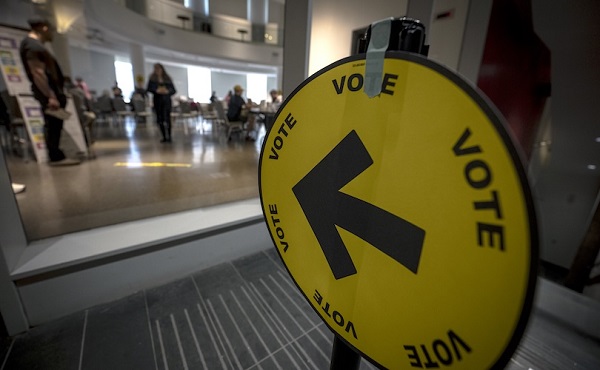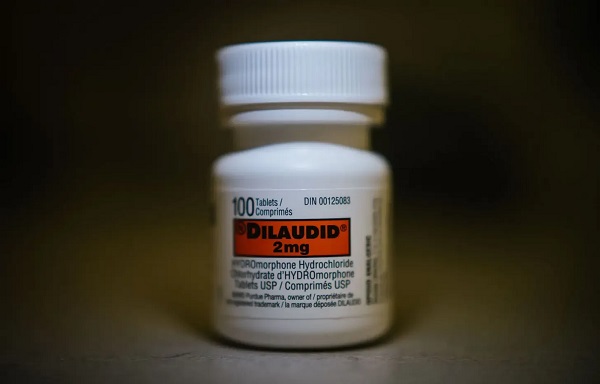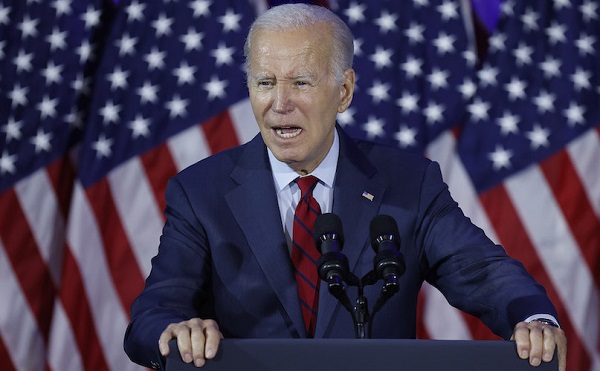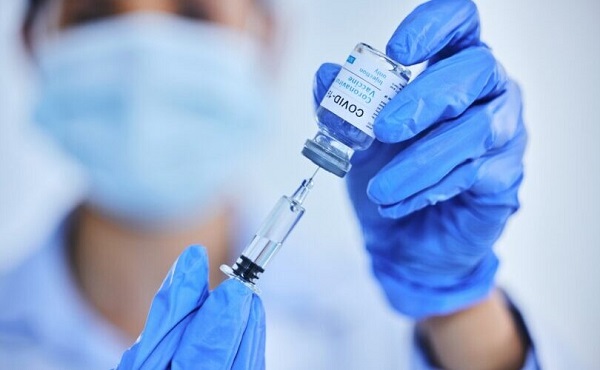Opinion
UK set to ban sex ed for young children amid parental backlash against LGBT indoctrination

From LifeSiteNews
There is undoubtedly a backlash against LGBT ideology unfolding in many Western countries, the source of which includes many ambivalent towards LGBT lifestyles but who are still uncomfortable teaching the ideology to children.
In March, podcaster Joe Rogan paid tribute to his favourite teacher. His seventh-grade science teacher, he noted, “was a brilliant man and he taught me about wonder. I think about that guy all the time.” But now, Rogan said, teachers are frequently fixating on issues of sex and gender. “I don’t want that gang of morons teaching my children about biological sex or gender,” Rogan said, adding that Drag Queen Story Hour is unacceptable for kids. “I don’t want you teaching them about any of those things.”
Instead, he suggested, teachers should focus on history, and math, and… all the things teachers used to focus on.
Rogan’s position on sex education is significant not only because he is the most popular podcaster in the world, but because he has achieved his success because he is a microcosm of the average adult. He is largely libertarian in the “live and let live” sort of way that saw a huge public opinion shift in favour of same-sex “marriage,” which Rogan supports; he is not religious; but he is still very uncomfortable with the full-scale sexualization of our education institutions and the insertion of gender ideology into public school curriculums across the board.
Rogan is something of a bellwether on these issues – he articulates the sort of common sense that many people hold but cannot articulate (or are too fearful to).
The “silent majority” is not a moral majority, but they are uncomfortable with the vast, swift social changes we have seen unfold over the past decade. Much of the backlash against gender ideology and increasingly explicit and instructional sex education in schools comes not from Christians – there are simply not enough of us – but from people who do not have moral objections to LGBT ideology, but do not want it taught to children. In short, most people are fine with adults doing whatever they want to, but they still believe that these behaviours and lifestyles are the purview of adults, not children.
That is why we are beginning to see government action on public school sex education even in the post-Christian United Kingdom. According to a recent BBC report, the U.K. government is planning to ban sex education for children under the age of ten, including a ban on any content about gender identity. Teachers’ unions, predictably, have pushed back, insisting that the proposed plan is “politically motivated” and that there has been no issue with inappropriate material. That claim is laughable; parents have been protesting the LGBT curriculum and other explicit materials for years now, and school staff have frequently responded by accusing them of various phobias.
According to the BBC, the “statutory guidance on relationships, sex and health education (RSHE) – which schools must follow by law – is currently under review. The government believes clearer guidance will provide support for teachers and reassurance for parents and will set out which topics should be taught to pupils at what age.” Sex education is not “typically taught until Year 6,” when children are 10, and “parents already have the right to withdraw” their child, although this has proven difficult to do.
Sex education has been mandatory for older students since September 2020, and the “government strongly encourages schools to include teaching about different types of family and same-sex relationships.”
This curriculum – referred to as “relationships education” – is compulsory and parents cannot remove their children.
The BBC notes that parents have been demanding changes in order to protect the innocence of children, while educators are insisting that the content is necessary because children are exposed to this information online anyway and that it is important for “trusted adults” to contextualize that information. That is the crux of the issue here that few are openly addressing: educators want to “contextualize” this information from the perspective of a pro-LGBT worldview, while many parents do not want this material taught at all because they fundamentally disapprove of the LGBT ideology itself.
There is undoubtedly a backlash against LGBT ideology unfolding in many Western countries, but it is important to recognize the source of that backlash. Although Christians and other religious objectors are certainly part of that backlash, their numbers are not large enough, in most places, to force government action.
The growing discomfort we see in polling data is thus far more likely to be of the Joe Rogan variety – we should live and let live, but we should also let kids be kids. As the U.K. government’s proposed guidance highlights, this means that there will be changes, but not significant ones.
LGBT ideology will still be compulsory for later grades, and state schools will still be teaching state dogmas.
National
Liberals push to lower voting age to 16 in federal elections

From LifeSiteNews
Liberals in Canada, led by MP Nathaniel Erskine-Smith, are petitioning to lower the federal voting age to 16, arguing that ‘informed’ youth should have a voice in elections.
Liberals are petitioning for high schoolers to be allowed to vote in federal elections.
In a July petition introduced to the House of Commons by Liberal MP Nathaniel Erskine-Smith, Liberals are pushing for the voting age for federal elections to be reduced from 18 years old to 16 years old, arguing that youth need a voice in society.
“Sixteen and seventeen-year-olds across Canada are already taking on real responsibilities, from working part-time jobs and paying taxes, to driving, volunteering, and taking on family responsibilities,” the petition stated.
“Young Canadians are informed, thoughtful, and actively involved in their schools, communities, and movements that shape our country’s future,” it continued.
“Extending the voting age to 16 would empower a new generation to participate in democracy while still in school, where habits of civic engagement are more easily built and supported,” the petition declared.
Interestingly, the Liberals’ push to decrease the voting age in Canada comes at a time when young Canadians are increasingly voting Conservative.
In 2015, former Prime Minister Justin Trudeau was wildly popular with Canadian youth, receiving the majority of the young vote and visiting high schools across the country.
However, in the 2025 election, young Canadians favored the Conservative party, which received 41 percent of the votes from Canadians aged 18-34, while Liberals only received 37 percent from the same demographic.
The political shift is largely attributed to rising costs of living, including food and housing, under the Liberal administration.
Trudeau’s carbon tax, framed as a way to reduce carbon emissions, has cost Canadian households hundreds of dollars annually despite rebates. According to the Parliamentary Budget Officer, this year, the tax will cost the average Canadians family up to $911 more this year than they get back in rebates.
Additionally, in 2024, Food Banks Canada reported that 2 million visit food banks each month, a 90% increase from 2019.
Furthermore, directly following a report that Canada’s poverty rate increased for the first time in years due to high inflation spurred by government spending, polls showed that nearly half of Canadians are only $200 from complete financial ruin, and yet Liberals refused to change their policies.
Addictions
After eight years, Canada still lacks long-term data on safer supply

By Alexandra Keeler
Canada has spent more than $100 million on safer supply programs, but has failed to research their long-term effects
Canada lacks long-term data on safer supply programs, despite funding these programs for years.
Safer supply programs dispense pharmaceutical opioids as a replacement for toxic street drugs.
There is a growing body of research on safer supply’s short-term health effects. But there are no Canadian studies that evaluate program participants’ health impacts beyond 18 months.
The absence of research into long-term data on safer supply means policymakers do not understand how safer supply affects participants’ health, substance use or social outcomes over time.
“Long-term data is important because it helps us understand not just short-term health outcomes like reduced overdoses, but also broader impacts on quality of life, stability and health care use,” said Farihah Ali, scientific lead at the Institute for Mental Health Policy Research at CAMH. The Centre for Addiction and Mental Health is one of Canada’s leading centres for addiction research and clinical care.
Pilot projects
Canada’s first safer supply programs were introduced in Ontario in 2016. Those programs were initially small in scope, intended for a small group of high-risk individuals.
In 2020, the federal government began funding safer supply pilot programs across the country. Provinces are responsible for the delivery and regulation of these programs.
B.C. introduced provincewide programs in 2021. Other provinces, such as Alberta, have restricted safer supply access to a very small number of clinics, and have generally shifted away from harm reduction models in favour of recovery-oriented approaches.
According to the Canadian Public Health Association, an advocacy organization, the original goal for safer supply was to reduce deaths and harms associated with the unregulated toxic drug supply. It was not meant to replace addiction treatment, but to rather act as a bridge to further care.
However, a 2023 report by researchers at McMaster University and Simon Fraser University noted safer supply “does not principally operate toward goals of treatment or recovery.” The report describes safer supply instead as an emergency intervention focused on stabilization and survival.
Evidence gaps
There is a small but growing body of short-term studies on the health effects of Canada’s safer supply programs. Most only track participants’ outcomes for up to 12 months.
Some of those studies suggest safer supply may reduce the immediate harms associated with drug use.
A 2024 study found a 91 per cent reduction in the risk of death among high-risk individuals receiving safer supply in B.C. Critics have raised concerns about the study’s methodology, sample size and confounding variables.
In contrast, a March study suggested B.C.’s safer supply and decriminalization policies may be associated with increased hospitalizations. These findings also sparked controversy, with experts debating how well the data isolate causal impacts.
And a comparative study released in April also showed some positive outcomes from safer supply. It too sparked significant expert debate.
‘Arms-length’
Of all the provinces, B.C. has implemented safer supply most broadly. The province’s health ministry did not directly respond when asked about the long-term goals of its safer supply program, or whether B.C. collects longitudinal data on program participants’ health outcomes.
“Evidence shows [safer supply] helps separate people from the unregulated drug supply, manage their substance use and withdrawal symptoms with regulated medications, and helps connect them to voluntary health and social supports,” a Ministry of Health spokesperson told Canadian Affairs in an email.
The ministry did not provide the evidence it referenced.
At the federal level, Health Canada confirmed that, to date, it has funded just two evaluations of safer supply programs, despite spending more than $100 million on safer supply since April 2023.
The first was a short-term study, funded by the federal government’s Substance Use and Addictions Program program. Conducted over four months, that study assessed 10 safer supply programs in Ontario, B.C., and New Brunswick. It documented initial impacts on participants’ lives and program delivery, primarily through qualitative methods such as interviews and surveys.
The second study is an ongoing, “arms-length evaluation” of 11 safer supply pilot programs funded by the Canadian Institutes of Health Research (CIHR), Canada’s federal health research agency.
When asked about long-term research on safer supply, Health Canada referred Canadian Affairs to a 2022 funding announcement about this multi-year evaluation. While the evaluation is being conducted over several years, it is unclear if it includes long-term tracking of patients’ outcomes.
Barriers and resistance
There are a number of factors that make it challenging to evaluate safer supply programs over long periods.
Ali, of CAMH, says unstable, short-term funding can disrupt long-term research.
“When programs are shut down or scaled back, we lose contact with participants and the ability to track outcomes over time,” she said.
Program participants can also be difficult to track over long periods, she says. Many struggle with housing insecurity, health instability and criminalization.
Frontline staff also face burnout and high turnover, she says, limiting support for such research activities.
Additionally, there are tradeoffs between the anonymity needed to encourage patients to access safer supply programs and the ability to collect detailed data.
“Ethical concerns — like not wanting to burden participants or risk their safety or confidentiality — require us to design studies that are trauma-informed and flexible, which adds complexity to long-term data collection,” Ali said.
Julian Somers, a clinical psychologist and professor at Simon Fraser University, says B.C.’s failure to conduct long-term evaluations of its safer supply programs is not just an oversight, but an act of negligence.
“B.C. has some of the best pharmaceutical data systems in the world,” Somers said, referring to PharmaCare and PharmaNet — databases that capture every prescription drug transaction in the province.
Somers says his team previously used PharmaNet data to examine prescribed opioids’ effects on health and social outcomes. In 2017, he proposed a long-term safer supply evaluation using these tools.
In 2017, he proposed a long-term evaluation of B.C.’s safer supply programs.
The province declined.
According to Ali, “Future research should explore how safer supply impacts people’s long-term health, stability and connection to care.”
“We also need to listen to people’s experiences, how safer supply affects their daily lives, their sense of dignity, and their relationships with care providers through qualitative mechanisms.”
This article was produced through the Breaking Needles Fellowship Program, which provided a grant to Canadian Affairs, a digital media outlet, to fund journalism exploring addiction and crime in Canada. Articles produced through the Fellowship are co-published by Break The Needle and Canadian Affairs.
-

 Crime2 days ago
Crime2 days agoDEA Busts Canadian Narco Whose Chinese Supplier Promised to Ship 100 Kilos of Fentanyl Precursors per Month From Vancouver to Los Angeles
-

 conflict2 days ago
conflict2 days agoTrump’s done waiting: 50-day ultimatum for Putin to end Ukraine war
-

 Business8 hours ago
Business8 hours agoDemocracy Watchdog Says PM Carney’s “Ethics Screen” Actually “Hides His Participation” In Conflicted Investments
-

 International21 hours ago
International21 hours agoMatt Walsh slams Trump administration’s move to bury Epstein sex trafficking scandal
-

 Immigration9 hours ago
Immigration9 hours agoUnregulated medical procedures? Price Edward Islanders Want Answers After Finding Biomedical Waste From PRC-Linked Monasteries
-

 Alberta2 days ago
Alberta2 days agoMedian workers in Alberta could receive 72% more under Alberta Pension Plan compared to Canada Pension Plan
-

 International1 day ago
International1 day agoBiden autopen scandal: Did unelected aides commit fraud during his final days in office?
-

 Business1 day ago
Business1 day agoConservatives demand probe into Liberal vaccine injury program’s $50m mismanagement





